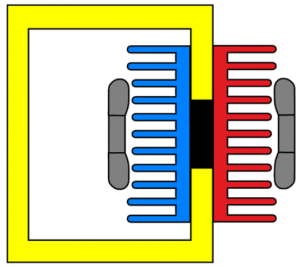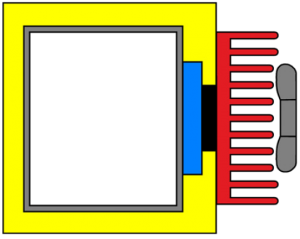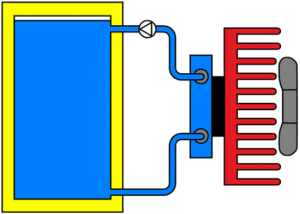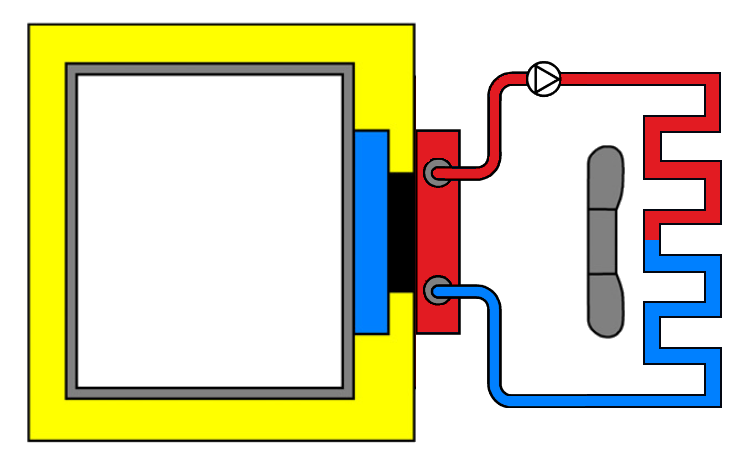Air-to-air
 Air-to-air cooling (or heating) using convection. For example, this principle can be used to cool/heat equipment or the air within a closed (instrumentation) cabinet. The coolers are easily installed by making a hole in the housing.
Air-to-air cooling (or heating) using convection. For example, this principle can be used to cool/heat equipment or the air within a closed (instrumentation) cabinet. The coolers are easily installed by making a hole in the housing.
Direct-to-air
 Direct-to-air cooling (or heating) using conduction.
Direct-to-air cooling (or heating) using conduction.
Objects that are mounted to the “cold plate” of the coolers are being cooled directly by the cooling assembly. This way, for example, an object containing samples can be kept at a very steady temperature.
Liquid-to-air

Cooling (or heating) of a liquid or gas using conduction. The heat is generally absorbed by a liquid and dispersed to the surrounding air by the heat sink. For the best heat transfer turbulators are installed in the liquid channels.
Direct-to-liquid

Cooling or heating using conduction. Objects attached to the cold plate of the cooler are cooled directly by the assembly. The heat will be dispersed by the liquid. With a circulating circuit the heat can be dispersed to the environment by using a heat exchanger. The hot side can also be cooled directly by tap water (open circuit).



